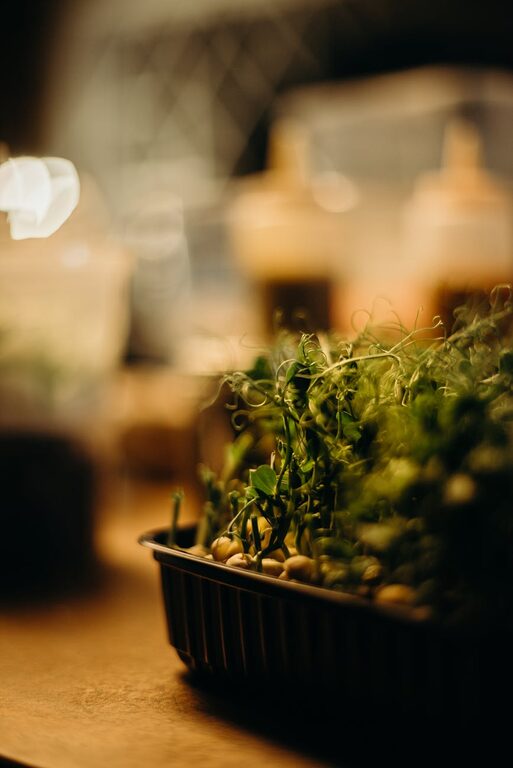Starting a small herb garden indoors is a rewarding way to bring fresh flavors into your kitchen and add greenery to your living space. Whether you have a sunny windowsill or limited space, growing herbs inside is both doable and enjoyable. In this guide, we’ll walk you through everything you need to know to get started, from choosing the right herbs to care tips that ensure your garden thrives.
Why Grow Herbs Indoors?
Growing herbs indoors offers several benefits:
– Convenience: Fresh herbs are always within reach for cooking.
– Cost-effective: Save money by growing your own instead of buying fresh herbs.
– Year-round availability: No need to rely on seasonal herb availability.
– Improved air quality: Indoor plants can help purify the air.
– Therapeutic: Gardening is a relaxing and satisfying hobby.
Now, let’s explore how to create your own indoor herb garden step-by-step.
Choosing the Right Herbs for Indoor Growing
Start by picking herbs that adapt well to indoor conditions. Some popular and easy-to-grow options include:
– Basil: Perfect for warm, sunny spots and regular watering.
– Parsley: Likes moderate sunlight and keeps well indoors.
– Mint: Thrives indoors but can spread quickly, so keep it in its own pot.
– Thyme: Prefers full sun and well-drained soil.
– Chives: Tolerant of lower light and adds mild onion flavor.
– Cilantro: Requires cooler temperatures and bright light.
– Oregano: Loves sunlight and well-drained soil.
Start with 3-5 of your favorites to keep things manageable.
Selecting Containers and Soil
Containers
Choose pots with good drainage holes to prevent waterlogging. You can use:
– Small terracotta pots – breathable and classic
– Ceramic or plastic pots with drainage
– Recycled containers (just ensure proper drainage holes)
Consider the size: 4 to 6 inches in diameter works well for most herbs.
Soil
Use a high-quality potting mix designed for indoor plants. Avoid garden soil, which may be too dense and contain pests. Herb-friendly potting soil is usually light and drains well.
Finding the Perfect Spot for Your Herb Garden
Most herbs need at least 6 hours of sunlight each day. Here’s how to pick the right location:
– A sunny south- or west-facing windowsill is ideal.
– If natural light is limited, consider using a grow light to provide supplemental lighting for 12-16 hours daily.
– Avoid placing plants near temperature extremes like cold drafts or heat vents.
Planting Your Herbs
You can start herbs from seeds, seedlings, or cuttings.
Starting from Seed
- Fill pots with potting soil, leaving about a half-inch from the top.
- Plant seeds according to packet instructions (usually ¼ to ½ inch deep).
- Water gently to moisten soil but keep it from flooding.
- Cover with a clear plastic dome or wrap to retain moisture until seeds sprout.
- Place in a warm, bright spot.
Using Seedlings
Buying young herb plants from a nursery can speed up the process.
- Gently loosen roots before planting.
- Fill your pot with soil, create a hole, place the seedling, and cover roots.
- Water moderately.
Caring for Your Indoor Herb Garden
Watering
– Herbs prefer evenly moist soil but not soggy.
– Check soil moisture daily by inserting a finger about an inch deep.
– Water when the topsoil feels dry.
– Avoid letting plants sit in water.
Fertilizing
– Feed herbs with a balanced liquid fertilizer every 4-6 weeks.
– Use half the recommended strength to avoid over-fertilizing.
Pruning and Harvesting
– Regularly pinch or cut herbs to encourage bushy growth.
– Harvest leaves as needed but avoid removing more than one-third of the plant at a time.
– Remove any dead or yellowing leaves to keep the plant healthy.
Dealing with Common Issues
– Yellow leaves may indicate overwatering or lack of light.
– Leggy growth usually means the plant needs more light.
– Pests like aphids can sometimes appear; wipe leaves with a damp cloth or use insecticidal soap if needed.
Tips for Success
– Rotate pots weekly so all sides get sunlight.
– Group herbs with similar light and water needs together.
– Consider labeling each pot for easy identification.
– Experiment with different herbs and find what grows best in your environment.
– Keep a journal to track watering, growth, and any challenges.
Conclusion
Starting a small herb garden indoors is an enjoyable way to enhance your meals and connect with nature, even inside your home. With the right choice of herbs, containers, and care, you’ll soon have a thriving green space full of aromatic, fresh herbs. Whether you’re new to gardening or looking to add a little life to your kitchen, an indoor herb garden is a wonderful project to undertake.
Happy gardening!

